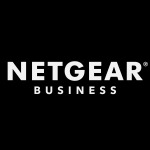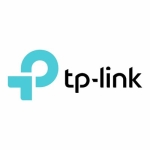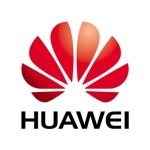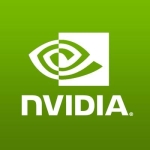What is our primary use case?
These switches are best used in mid-size businesses for access and collapsed distribution/core switching. They offer both layer 2 and layer 3 models and have a well-rounded switch feature set for a switch line. Overall, we have found them to meet just about every need we want in a switch. We have them as 10-GB solutions for high-speed SAN connectivity all the way down to 8-port solutions in some high-end homes. They offer ACLs, LACP, port security, access policies, and DHCP security, to name a few options. The methods that Meraki has chosen to implement some of these features via the cloud is amazingly simple to manage compared to locally managed solutions.
How has it helped my organization?
For MSPs, a cloud-managed solution is so much more efficient than a locally managed solution, and having a single pane of glass with Meraki's dashboard is an easy-to-use solution. It is simple to switch between managing wireless, security appliances, and switches on the dashboard if all three Meraki solutions are implemented. This simplifies the management process and allows the granular control of the devices or in some cases global control of all ports. Change management is built-in (who did what) and sorely missing in locally managed solutions. Additionally, you can manage switch ports across multiple devices all at the same time. Adding a new VLAN to all trunk ports in the organization is simple with tags selecting all trunk ports and adding the new VLAN by number.
What is most valuable?
Setting up a switch can be performed prior to having your hands on the device. Once you purchase a Meraki switch you will get an email from Meraki with a code to add to your dashboard and then you can start setting up your switch so when it arrives it will download its configuration and be all set up. It is practically a zero-touch deployment. Firmware upgrades on devices are pushed from the cloud and typically only bring the device down for a minute or two while applied. The built-in packet capture on them allows easier troubleshooting even when you are not onsite. They even allow you to create staged upgrade plans so you can schedule which switches upgrade in order to minimize downtime.
What needs improvement?
Meraki MS switches are great for pretty much all SMB networks and most enterprise networks. However, there are some higher-end functions that larger enterprise networks with full access, distribution, and core switch stack may find limiting.
One of the most challenging things to get used to is the delay in the time it takes for changes to be implemented. With a locally managed switch, you make a change and it is pretty much immediate. With the nature of cloud management, you make a change and it may take one to three minutes before that change makes its way to the device and takes effect. It's not a problem once you get used to it but when we first started working with Meraki, I found myself making a change and immediately assuming it didn't work so I would change it again. A little patience is your friend when making changes. They have a field on the dashboard that lets you know when the config is up to date so that makes it easy to know when you can start testing your change(s). I'm not sure if this delay could be reduced or not by prioritizing communication but it is by no means a show-stopper. They warn you when you are about to make changes to the uplink path of a device so you can double-check to make certain your change will not break the Internet access for the device.
Buyer's Guide
Meraki MS Switches
October 2025
Learn what your peers think about Meraki MS Switches. Get advice and tips from experienced pros sharing their opinions. Updated: October 2025.
871,408 professionals have used our research since 2012.
For how long have I used the solution?
I have been using Meraki MS Switches for seven years.
What do I think about the stability of the solution?
MS switches have proven very reliable.
What do I think about the scalability of the solution?
The solution is not as scalable as Cisco Nexus but not as expensive either. I think Meraki has hit the sweet spot on scaling.
How are customer service and support?
Technical support is about an eight on a scale of ten. Meraki techs have additional capabilities beyond what the dashboard admin has so they can make some adjustments that you can't. Which is probably a good thing overall but can be frustrating. They use packet tracing rather effectively to troubleshoot which is available to the end user also.
Which solution did I use previously and why did I switch?
Cisco switches were used previously. The main reason I switched was the cloud management. Ironically, after I switched, Cisco purchased Meraki. I was concerned Cisco would mismanage Meraki when that happened but they seem to have stayed out of the Meraki business model for the most part. Cisco and Meraki are starting to share some backend functions (Umbrella for example). Cisco is starting to offer Cisco switches that can be managed using the Meraki dashboard or local management.
How was the initial setup?
The dashboard is easy to setup and manage.
What about the implementation team?
We implemented the solution in-house.
What was our ROI?
We have seen a two to three year ROI.
What's my experience with pricing, setup cost, and licensing?
The licensing model is hard for some to wrap their heads around and I understand their concerns. Meraki, like numerous other vendors, is too expensive for a lot of small businesses. However, if uptime is critical to your organization, the cloud management, great stability, and performance of the MS line is a powerful combination.
There are other cheaper solutions out there and some of them are quite good. I really like Meraki overall. Their license requirement means you always have support and next day replacement on all your Meraki equipment. Be careful if purchasing Meraki hardware secondhand. The warranty only applies to the original owner. So you should have a warranty from the secondhand provider if that is important to you.
They co-terminate the licenses so each license you purchase has a prorated impact on the co-termination date. You can choose to not use the co-termination date if you wish. The nice feature about the co-termination date is you don't have to micromanage each device's license. This is across all Meraki devices (security appliances, switches, APs, etc.).
Purchase your switch with a one, three, five, seven, or ten-year license depending on your planned use and you might never need to think about a license again as you will be likely replacing the device with something newer at the end of that period. Purchasing the longer license protects from future price increases and also saves money versus adding on to the term later. Meraki is an ecosystem that works best if you are "all in" across your device lineup.
I find that Meraki licensing is a polarizing solution as you are either happy with it or have an allergic reaction to it.
Which other solutions did I evaluate?
NETGEAR, Ubiquiti, Aruba, Cisco Catalyst were all previously evaluated.
What other advice do I have?
Meraki offers some free equipment if you participate in their webinars. You can get a free security appliance, switch, and AP after watching three webinars and trying them out for yourself. The free equipment comes with a three-year license. Obviously, it will be their lowest-end equipment, but it still gives you the Meraki dashboard experience.
Which deployment model are you using for this solution?
On-premises
Disclosure: My company does not have a business relationship with this vendor other than being a customer.

















